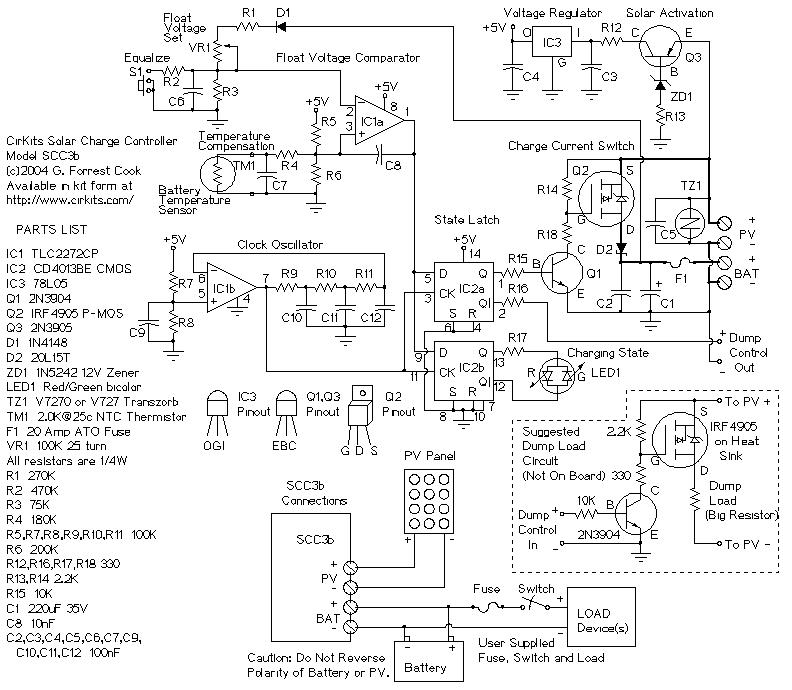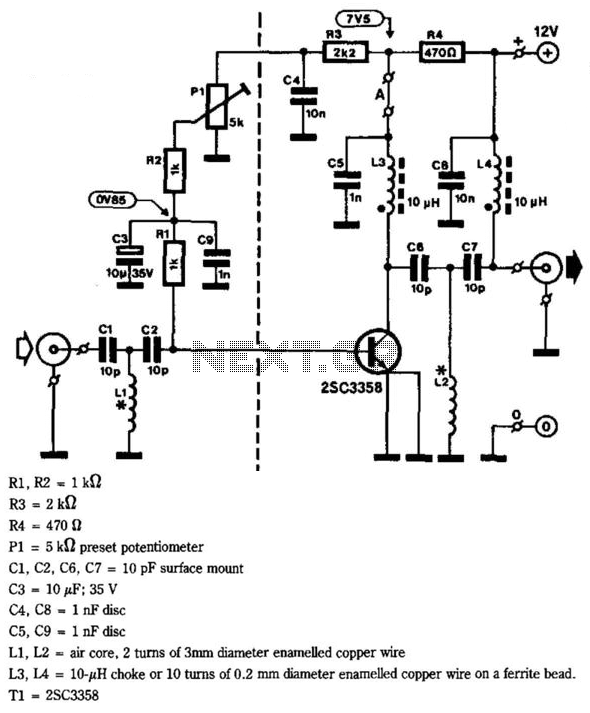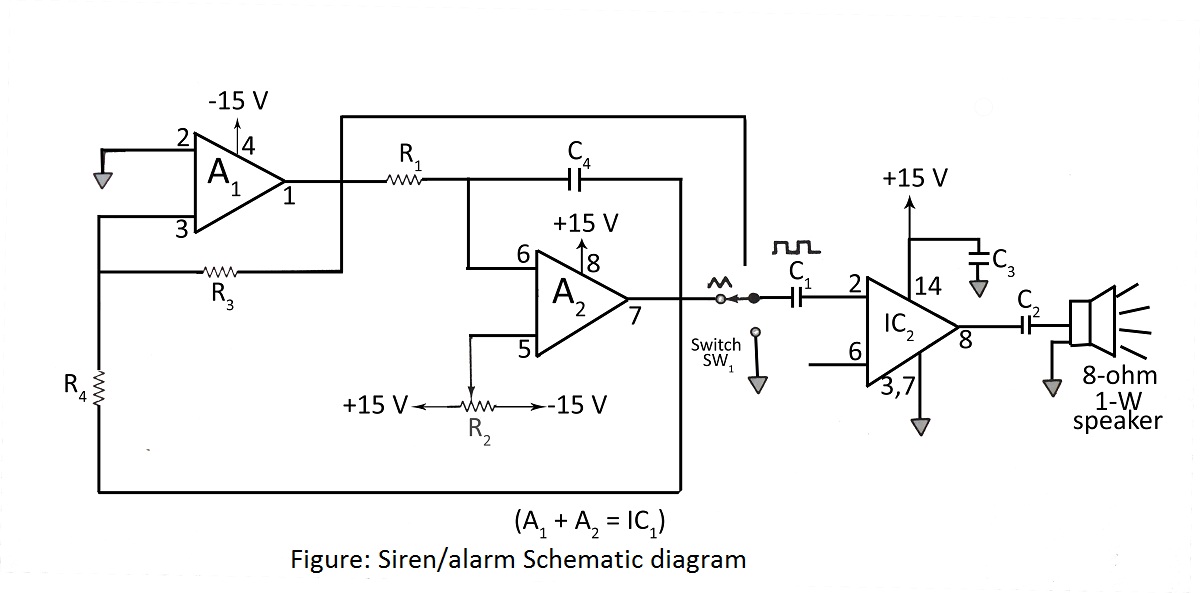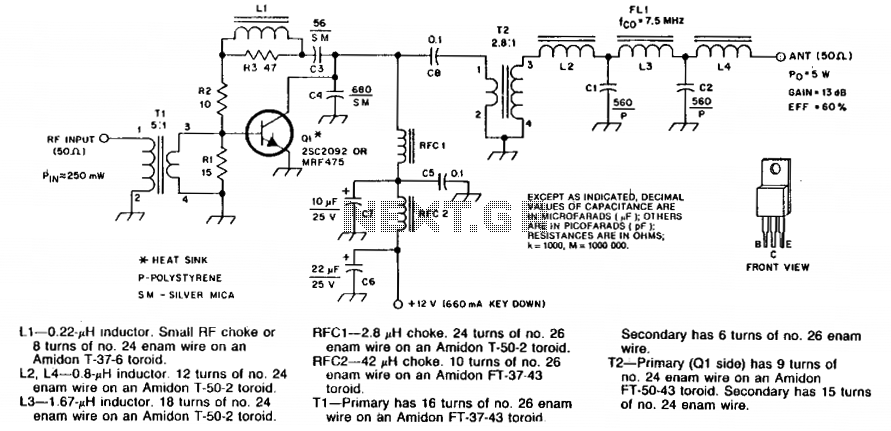
Bidirectional Compound Op Amp
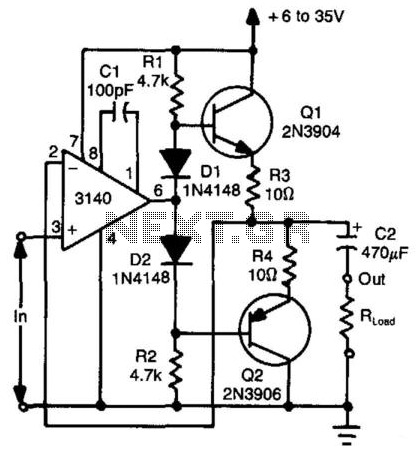
Using two transistors (Q1 and Q2), a bidirectional operational amplifier can source or sink up to 50 mA. Diodes D1 and D2 provide biasing for Q1 to eliminate "dead-zone" effects.
The described circuit utilizes two transistors, Q1 and Q2, configured to operate as a bidirectional operational amplifier. This configuration allows the circuit to effectively source or sink a current of up to 50 mA, making it suitable for applications requiring moderate power handling.
Transistor Q1 is responsible for sourcing current, while Q2 is configured to sink current. The operational amplifier's bidirectionality is crucial for applications where signal polarity may change, allowing the circuit to handle both positive and negative signals without distortion.
Diodes D1 and D2 play a critical role in the circuit by providing the necessary biasing for Q1. This biasing is essential to mitigate "dead-zone" effects, which occur when the output of the amplifier does not respond to input signals within a certain range. By ensuring that Q1 is properly biased, the diodes help maintain linearity and improve the overall performance of the operational amplifier.
In practical applications, this circuit can be integrated into various systems, including audio amplifiers, signal conditioning circuits, and control systems where precise signal manipulation is required. The careful selection of the transistors and diodes, along with appropriate biasing resistors, will enhance the performance characteristics of the amplifier, including gain stability and frequency response. Using two transistors (Ql and Q2), a bidirectional op amp can source or sink up to 50 mA. Dl and D2 provide b ias for Ql to eliminate "dead-zone" effects.
The described circuit utilizes two transistors, Q1 and Q2, configured to operate as a bidirectional operational amplifier. This configuration allows the circuit to effectively source or sink a current of up to 50 mA, making it suitable for applications requiring moderate power handling.
Transistor Q1 is responsible for sourcing current, while Q2 is configured to sink current. The operational amplifier's bidirectionality is crucial for applications where signal polarity may change, allowing the circuit to handle both positive and negative signals without distortion.
Diodes D1 and D2 play a critical role in the circuit by providing the necessary biasing for Q1. This biasing is essential to mitigate "dead-zone" effects, which occur when the output of the amplifier does not respond to input signals within a certain range. By ensuring that Q1 is properly biased, the diodes help maintain linearity and improve the overall performance of the operational amplifier.
In practical applications, this circuit can be integrated into various systems, including audio amplifiers, signal conditioning circuits, and control systems where precise signal manipulation is required. The careful selection of the transistors and diodes, along with appropriate biasing resistors, will enhance the performance characteristics of the amplifier, including gain stability and frequency response. Using two transistors (Ql and Q2), a bidirectional op amp can source or sink up to 50 mA. Dl and D2 provide b ias for Ql to eliminate "dead-zone" effects.
